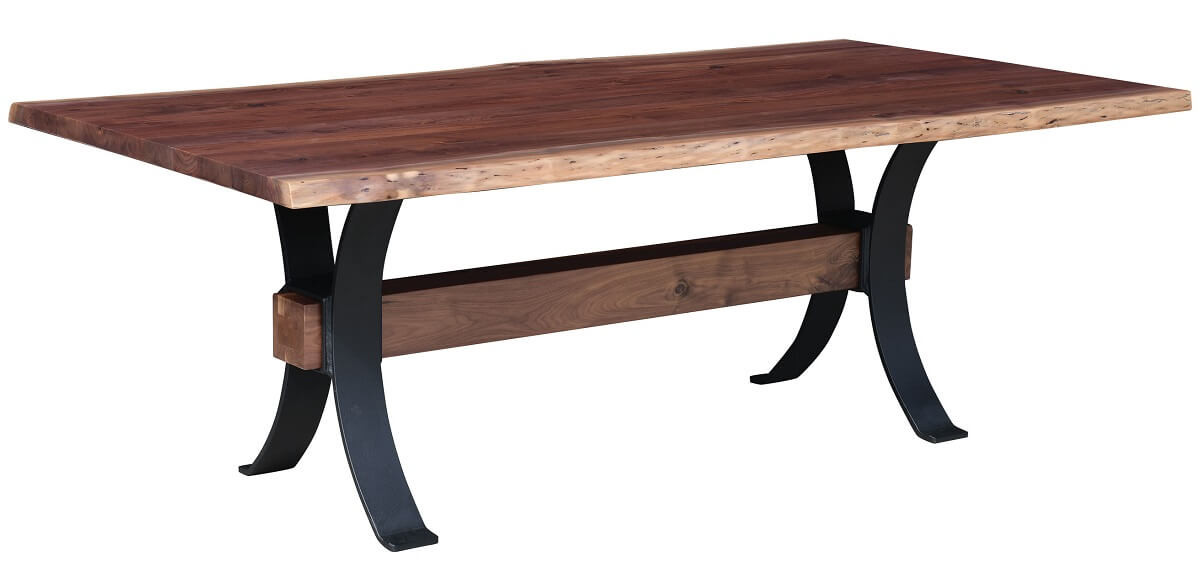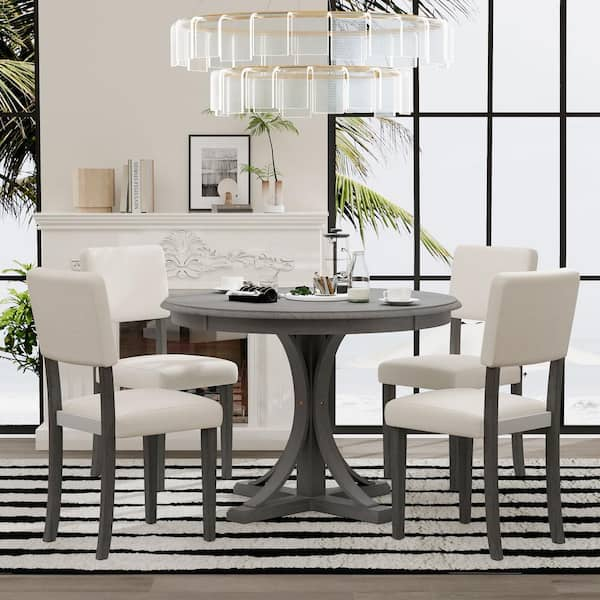The Impact of Dining Room Table Legs on Your Table's Overall Design
The Impact of Dining Room Table Legs on Your Table's Overall Design
Blog Article
Just How to Choose the Perfect Dining-room Table Legs for Your Home Décor
Selecting the perfect dining room table legs is a nuanced process that calls for mindful factor to consider of different aspects, including your space constraints, visual choices, and useful needs. The interplay between dimensions, products, and styles can significantly affect the setting of your dining area, making it important to approach this choice carefully.
Assess Your Dining Area
Evaluating your dining area is critical for picking the right table legs that match both visual appeals and functionality. Begin by gauging the dimensions of your eating area, consisting of ceiling height, floor space, and closeness to other furniture. This details will assist determine the proper size and elevation of your table, which straight affects the option of table legs.
Next, think about the design and layout of your eating room. An open-concept layout might benefit from table legs that provide aesthetic agility, such as slender steel or acrylic options. On the other hand, a more standard setting may ask for tough wooden legs that offer a sense of durability.
Review the existing shade palette and materials in your dining area. Balancing the table legs with these components develops a natural appearance that enhances the overall design. Furthermore, consider the capability called for in your room. For example, if you often hold big events, take into consideration legs that give added assistance and security.
Ultimately, a complete analysis of your eating area will direct you in making an informed decision, ensuring that your table legs not just boost the aesthetic charm yet likewise serve useful functions.
Consider Your Style Preferences
When choosing dining-room table legs, it is necessary to reflect on your personal design preferences, as they considerably affect the total aesthetic of your eating area. Your option of table legs can either enhance or comparison with existing design, making it important to align them with your recommended interior decoration style.
If your home leans towards a modern-day aesthetic, consider streamlined metal or minimal wood legs that provide a tidy, uncluttered appearance. For a much more conventional technique, luxuriant wood legs with complex carvings can include a touch of beauty and sophistication. Industrial styles profit from robust, basic materials such as reclaimed timber and metal mixes, reflecting a tough beauty.
Furthermore, farmhouse and rustic designs typically favor strong, beefy legs that evoke a feeling of heat and comfort. Alternatively, if your decoration is diverse, you might select unusual shapes or a mix of products to develop visual passion.

Evaluate Material Options
The selection of material for dining area table legs plays a critical role in both longevity and visual appeal. Common materials include timber, steel, and composite alternatives, each offering distinct characteristics that can influence the general look and durability of your table.
Timber is a classic choice, known for its heat and adaptability. Woods like oak and walnut give outstanding strength and can be finished in different stains to match any decor. However, softwoods like yearn are much more prone to scratches and dents, making them much less perfect for high-traffic areas.
Metal legs, have a peek at this site typically crafted from steel or aluminum, exhibit modernity and industrial charm. They are very sturdy and immune to wear, making them suitable for households with children or regular events (dining room table legs). Furthermore, metal can be ended up in different colors, boosting the personalization possibilities
Composite products, such as useful site MDF or laminate, deal affordability and varied styles. While generally much less long lasting than solid wood or steel, they can still offer a stylish look and are frequently very easy to preserve.
Ultimately, the product you choose need to line up with your lifestyle, visual preferences, and the degree of use your table will experience.
Determine Elevation and Size
Selecting the proper height and dimension for your dining room table is important for both functionality and comfort. The common height for dining tables commonly ranges from 28 to 30 inches, permitting adequate legroom for many people when seated. It is crucial to consider the measurements of your dining area and the types of chairs you intend to use.

Additionally, think about the percentages of your dining-room. A larger table in a large location can develop a grand setting, while a smaller sized table functions well in even more intimate setups. Inevitably, the ideal elevation and dimension will certainly balance with your general decoration and improve the dining experience for you and your guests.
Explore Personalization Opportunities

In addition, the design of the legs can be customized to fit various designs, such as rustic, contemporary, or industrial. For example, tapered legs can evoke a mid-century modern-day feel, while beefy, block-style legs may resonate with typical or farmhouse decoration.
Property owners can additionally check out color surfaces, from natural timber stains to repaint, allowing them to match or contrast with the table top and surrounding style.
In addition, leg height can be gotten used to accommodate certain seating arrangements or personal choices, improving both convenience and functionality.
Last but not least, unique decorations, such as makings or ornamental braces, can even more individualize the table legs, making the dining experience not just a declaration yet a meal item in the home. By considering these personalization options, property owners can develop a dining-room table that absolutely reflects their uniqueness.
Verdict
Selecting the excellent dining-room table legs requires cautious factor to consider of various aspects, consisting of the dimensions of the eating space, design choices, material resilience, and preferred height. Modification options even more improve the capacity to achieve a cohesive aesthetic that matches the general style. By systematically assessing these aspects, home owners can ensure that the chosen table legs not only meet useful requirements but also contribute positively to the dining experience and ambiance of the home.
Selecting the optimal eating area table legs is a nuanced procedure that requires careful consideration of different components, including your room restraints, visual choices, and sensible needs.Evaluating your dining area is essential for choosing the right table legs that match both aesthetic appeals and performance.When figuring out dimension, determine the location where the table will be put to ensure it fits easily, permitting for at the very least 36 inches of clearance around the table for simple movement. A bigger table in a large location can develop a grand atmosphere, while a smaller table works well in even more intimate settings.Selecting the ideal eating space table legs requires mindful factor to consider of different factors, consisting of the dimensions of the dining area, style choices, product sturdiness, and desired elevation.
Report this page